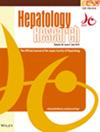Unveiling the dynamics of hepatitis C virus transmission among injection drug users and men who have sex with men: A comprehensive study in Japan
Abstract
Aim
In Japan, despite low nationwide hepatitis C (HCV) incidence, new infections among people who inject drugs (PWID) and men who have sex with men (MSM) hinder HCV elimination. We explored HCV transmission dynamics and screened HCV recombination within these populations.
Methods
This cross-sectional study recruited HCV-infected patients from Osaka National Hospital, Osaka, Japan, from January 2010 to September 2023. Data from questionnaires and medical records were analyzed. Serum samples collected before anti-HCV treatment underwent HCV RNA extraction, and sequencing of full core (576 bp) and NS5B (267 bp) regions using the Sanger method. Genotype distribution was determined by phylogenetic analysis, and recombinant screening was conducted.
Results
A total of 115 patients were categorized into non-MSM PWID (31), MSM PWID (15), MSM non-PWID (25), and non-MSM non-PWID (44). Positive amplification rates were 99.1% (114/115) for the full-core region, and 96.5% (111/115) for NS5B. No intergenotypic recombination was detected. The predominant genotype in non-MSM PWID was 2a (58%), whereas genotype 1b was most common in MSM PWID, MSM non-PWID, and non-MSM non-PWID groups (79%, 64%, and 68%, respectively). Nucleotide sequence similarity of 94.75%–100% was found in HCV strains from MSM PWID and MSM non-PWID in both full-core and NS5B regions, whereas strains from non-MSM PWID and non-MSM non-PWID were distinct.
Conclusion
The findings suggest that the transmission route in PWID is determined by MSM status, whereas MSM groups showed the same transmission route regardless of PWID. HCV control measures should be focused not only on PWID, but also on MSM to achieve HCV elimination in Japan.


 求助内容:
求助内容: 应助结果提醒方式:
应助结果提醒方式:


